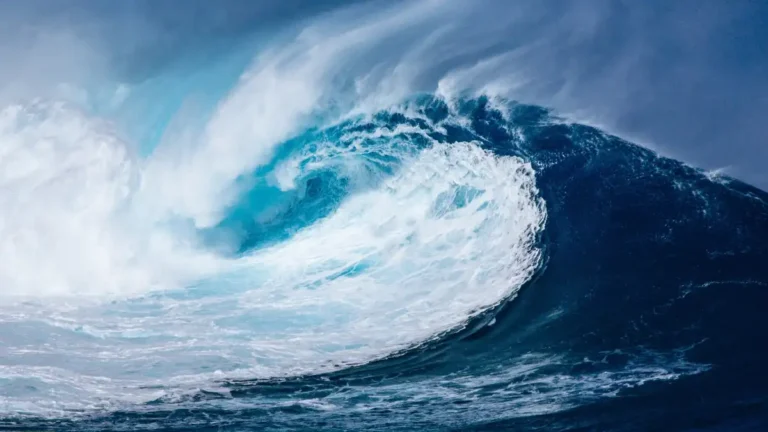From Soviet probes on Venus to modern prophets of doom—how science morphed into scripture and fear became a trillion-dollar faith
In May 1969, as the world hummed to the sound of moon rockets and Hendrix riffs, the Soviet Union quietly attempted something far more sinister than planting a flag on dead lunar dust. They pointed their planetary probe, Venera 5, at Venus—the planet of love, the bright evening star, Earth’s mythological sister—and tried to touch its surface.
The probe, a fragile tin soldier armed against an invisible war, was built to endure 25 bars of pressure. For context, that’s like balancing 25 Earth atmospheres on its head—an engineering feat that would crush submarines like beer cans. The Soviets thought this was plenty. Venus, they reasoned, could hardly be worse than the depths of our own oceans.
They were wrong.
Venera 5 survived for a meager 53 minutes before succumbing—18 kilometers above the surface. Not on the surface, not even close. It was as if Venus itself swatted the machine away with a contemptuous laugh. The Soviet scientists, chain-smoking in Moscow control rooms, stared at their screens in disbelief. If 25 bars wasn’t enough 18 kilometers up, what kind of nightmare lay below?
This post first appeared in 2019, back when I still entertained hope that rational arguments might sway public sentiment. I’ve since remastered it—sharpened the edges, clarified the threat, and realigned it with the Grimwright ethos: use what works, discard the rest, and always—always—question the narrative. The date remains unchanged as a historical marker. The content does not.
They found out in August 1970, when Venera 7 actually reached the surface. It clung to life for 35 minutes, gasping data through the cosmic static. The numbers it whispered back were apocalyptic: 92 bar of pressure. For comparison, that’s what you’d feel nearly a kilometer beneath the ocean here on Earth. The “planet of love” was no paradise. It was a cauldron with the lid clamped shut, an inferno trapped in its own blanket.
Paradise Lost
Since antiquity, Venus was poetry incarnate. To the Romans, the evening star was Aphrodite herself: luminous, beautiful, eternal. To Earth-bound dreamers, Venus was a twin world—a garden awaiting discovery, an exotic mirror of our own globe. Science fiction of the early 20th century painted Venus as a jungle planet teeming with oceans, strange flora, and perhaps humanoid inhabitants. A sister world waiting to be embraced.
Instead, we found hell. A pressure-cooker world hotter than Mercury, with clouds of sulfuric acid and a surface that would melt lead. Our sister planet was not a verdant Eden but a corpse preserved in fire. Venus taught us something ancient civilizations never knew: beauty in the night sky is no guarantee of mercy.
My Childhood with Venus
I was born in 1969—the year mankind walked on the Moon and the Soviets cooked a probe on Venus. My childhood was stitched together with tales of space, rockets, and cosmic possibility. But as the years wore on, Venus became a symbol not of discovery, but of dread.
By the time I reached my teenage years, a new phrase entered the public imagination: the “runaway greenhouse effect.” Carl Sagan—half scientist, half televangelist in a corduroy suit—preached it on television. Schoolbooks, science fiction novels, and news magazines hammered the message home: Venus wasn’t just a planet; it was a prophecy.
The story was seductive. Earth could become Venus if we didn’t repent. Our fossil-fueled sins would transform blue seas into boiling oceans, forests into wastelands, and cities into molten husks. Venus wasn’t just a world—it was a warning.
And so a new mythology was born. The cult of climate had its genesis in the death throes of a Soviet probe.
Who I Am, and Who I’m Not
Before your inner censor flares red and you label me a denier or heretic, let me situate myself.
I am not a climate scientist.
I am not an engineer.
I am not a corporate ghoul pocketing oil profits in offshore accounts.
I am an avid hiker. A man who has walked deserts and mountains and come back humbled by their indifference.
I am a father who wants his children, and his disabled son especially, to inherit a world worth living in.
And I remember the real environmental crises of my youth.
In Austria during the 1970s, our rivers were cesspools. The Mur and the March were so poisoned that even bacteria found it inhospitable. I lived through acid rain, skies the color of mustard gas, and birds falling lifeless from the heavens. Real environmentalism mattered then. Tangible, measurable, and deadly problems were solved with practical solutions.
But sometime in the 1980s, the narrative shifted. Every issue, every campaign, every environmental concern was cannibalized by one cause: climate. Forests? Climate. Oceans? Climate. Pollution? Climate. It became the suitcase into which every panic was stuffed.
My Position on Climate
So, where do I stand? Here is my creed:
- Climate changes. It always has. Ice ages, tropical ages, dry spells, floods—the Earth’s climate is a restless drunk, stumbling from one extreme to another.
- Human activity may contribute, but compared to volcanoes, asteroid strikes, or the shifting brightness of the Sun? We are background noise.
- CO2 likely has some heat-trapping properties. But outside laboratory jars, the planet’s complexity mocks our equations.
- The hysteria around climate is not about science—it is about power. Fear is the most renewable energy source in politics. Doomsday sells better than salvation.
The Snake Oil of Salvation
The solutions we are offered—wind farms, solar panels, green subsidies—are not salvation. They are economic wrecking balls dressed in virtue. They destabilize grids, drain treasuries, and enrich the very parasites who preach austerity to the masses.
They are not tools of deliverance. They are tools of destruction.
The Cult Test
I do not use the word “cult” lightly. But Climate Catastrophism ticks the boxes with alarming precision:
- Urgency: Cults insist you must act now, without pause or reflection. Climate activists chant the same: act now, act fast, or face annihilation. Their evidence? Computer models—prophecies spun by algorithms—that have failed time and again.
- Special powers: Greta Thunberg once claimed she could see CO2. A miraculous vision, except for the fact that CO2 is invisible. The movement thrives on prophets and messiahs, followed with near-religious fervor.
- Secrecy: When asked for raw data, leaders balk. Dr. Mann, patron saint of the hockey stick graph, famously lost a court case rather than reveal his data. Imagine demanding trillions in global policy while refusing transparency.
- Brainwashing: Members isolate themselves, repeat slogans endlessly, and treat dissent as contagion. “The science is settled.” “Listen to the experts.” The catechism of conformity.
- Dogma over facts: Data is adjusted until it fits the prophecy. Skeptics are smeared not just as wrong but as moral degenerates, on par with heretics or worse.
Look at that list. Tell me it doesn’t describe the climate crusade.
Cults Always Overreach
As long as the Climate Cult confined itself to conferences and marches, it thrived. Now it demands dominion—control over energy, diet, travel, speech. Like all cults, it has mistaken compliance for loyalty.
We tolerated Islamist extremists until their violence hit home. Then the world struck back. Likewise, the climate crusade will face resistance as soon as ordinary people realize the price of obedience is their standard of living.
The Quasi-Religious Mask
What irks me most is not the science—it’s the prohibition of questions. In true science, doubt is oxygen. Theories stand or fall by interrogation. But in climatology, doubt is blasphemy. Inquiry is heresy. To ask is to deny, and to deny is to be cast out.
I am not a Climate Denier. But I am a Climatology Denier. Because what parades as science is too often ideology, fear, and profit cloaked in the lab coat of authority.
Panic as Business Model
History is littered with panic merchants. Witches in Salem, comets in the Middle Ages, overpopulation in the 1970s, Y2K at the turn of the millennium. Each time, the apocalypse was rescheduled, the merchants of fear walked away richer, and the crowd shuffled on to the next hysteria.
Climate is no different. Doomsday is a trillion-dollar industry. Politicians milk it for power, corporations for subsidies, activists for donations. Everyone eats at the table of fear.
The Real Hell
The Soviets went to Venus expecting paradise and found a furnace. We, too, are constructing our own Venus—not with carbon dioxide, but with hysteria. Not with greenhouse gases, but with ideological suffocation.
We are manufacturing hell right here on Earth. A hell of rising costs, collapsing grids, stifled freedoms, and economies strangled by green dogma. A hell not born of physics but of politics.
And like all human hells, it is paved not with molten rock but with good intentions weaponized by opportunists.
Final Word
Venus was supposed to be the planet of love. Instead, it revealed itself as a death chamber. Our climate panic was supposed to be about saving the Earth. Instead, it risks becoming the death of reason.
The real runaway greenhouse effect isn’t in the atmosphere. It’s in our collective imagination—an inferno of fear feeding on itself, hotter and more destructive than any Venusian furnace.
If history has taught us anything, it is this: panic always ends in hell.




